We all aspire to have healthy, shiny, strong, beautiful moisturised hair. It is in this pursuit that many times we fall victims of the latest trends. We live in a fast-paced modern world expecting, and demanding, quick results and fixes and the hair industry feeds our demands. However, to have a healthy hair, and all that it entails, you will need to have patience as this takes time.
Cutting corners in this journey can often be a synonym of some hair setback. In this journey, transitioners need extra patience since dealing with two textures doesn’t come easy and has its challenges (don’t we all know it!). This coupled with the natural characteristics of curly hair should inform you that transitioning hair needs special care and attention.
Knowing how to start caring for transitioning hair (or natural hair) is key to achieving success in a healthy hair quest you’re just starting. Many of the things you need to start doing now will be a novelty to you, others not so much, however, it is important to know that there are many factors interfering with the health of your hair such as the environment (sun, wind, humidity or winter cold), swimming (chlorine and sea salt), your practices (use of styling tools, relaxing or hair dyeing) and even your diet.
More often than not, several of these aspects happen simultaneously weakening your hair by damaging its protective layer (cuticle layers) which will eventually lead to dull hair, split ends and hair breakage at the line of demarcation. If you want the best possible hair in this journey you need to be vigilant and take certain action now.
Important Actions To Take
Transitioner, or not, there are important steps you can take to achieve or maintain the health of your hair. As transitioners, we want our new growth to be the best it can be, and we want to strengthen our relaxed hair so it doesn’t break. So pay attention and take action!
- Diet – Yes, yes! You heard it before, and yet it is still being said. A diverse and balanced diet is key for good body function and is also key for healthy hair. Your meals should include foods such as salmon, Greek yoghurt, blueberries, walnuts or chicken. These are rich in vitamin B5, C, D and E, protein and omega 3 fatty acids. They help with hair growth, prevent hair loss, carry oxygen to hair and increase blood circulation in the scalp which feeds hair follicles. These are definitely good reasons to stock your fridge and pantry.
- Water, Water, Water – Our bodies are made of about 60% of water and it is very important to maintain these levels. What is good for our bodies is good for our hair. Water is vital for our hair it needs to be moisturised at all times. Water is the best moisturiser you can get. So, drink plenty of it to avoid brittle hair.
- UV Protection – It is important to protect your hair from sun rays, they can damage the cuticle layer of the hair making it dry, brittle, frizzy, thin and discoloured. Try to use products that have UV protection and/or wear a hat or scarf. Alternatively, you can use Natural Sun Protection For Your Hair.
- Salt & Chlorine – Going out to the beach or the swimming pool can really hurt your hair if you’re not careful. The salt and chlorine make your hair extremely dry and brittle which can damage the hair’s keratin. Make sure to rinse your hair properly to remove any residue. Use chelating shampoos if you frequently swim in chemically treated pools or live in hard water areas. These are very drying for the hair and should not be used every day. Read more about this on this post: Transitioning Hair and Swimming – Protective Measures.
- Stay Away from Chemical Treatments – As you may know, this damages the outer layers of the hair. Relaxing or dyeing your hair have a permanent effect on your hair, they expose the cortex area of the hair. Once it happens the protein in your hair is weakened and your hair loses its strength and elasticity. Your hair will most likely break if you don’t make efforts to repair it in some way like doing regular deep conditioning treatments. Because the hair is 97% protein it is important to preserve the outer layer of the hair that protects it.
- Avoid Styling Tools – Flat irons, curling iron, hair dryers and the like are damaging to the hair, especially if you don’t know how to use them properly. They reach extremely high temperatures that can fry your hair, imagine what it can do over time! If you must, use it very sporadically and with the proper precautions (heat protection).
- Low Sulphate Shampoo – If you use a shampoo try to use a low sulphate shampoo. These are less damaging to the hair, they don’t remove all the natural oils from the hair that curly girls desperately need.
- Deep Condition – This is not just a requirement for those who use styling tools or do chemical treatments. There are environmental factors that your hair is also exposed to and a deep conditioning session will keep your hair moisturised and strengthened.
- Trim Your Hair – Trimming is also important to achieve healthy hair. The ends of your hair are the oldest part of your hair and they have been exposed the longest to the environment, manipulation and possible chemical treatments. With time, the ends of the hair will have split ends or knots and they’ll become thin because they have less protective layers. This stalls the health and growth of your hair, therefore it’s best to get your hair trimmed regularly.
If you are in pursuit of healthier hair these suggestions will definitely put you on the right track. Here’s a small sum up of everything that you can pin and save for future reference.

Is there anything you would add to this list? What do you do to care for your transitioning hair?
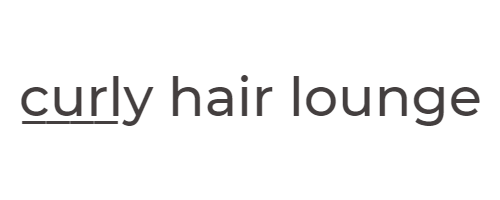
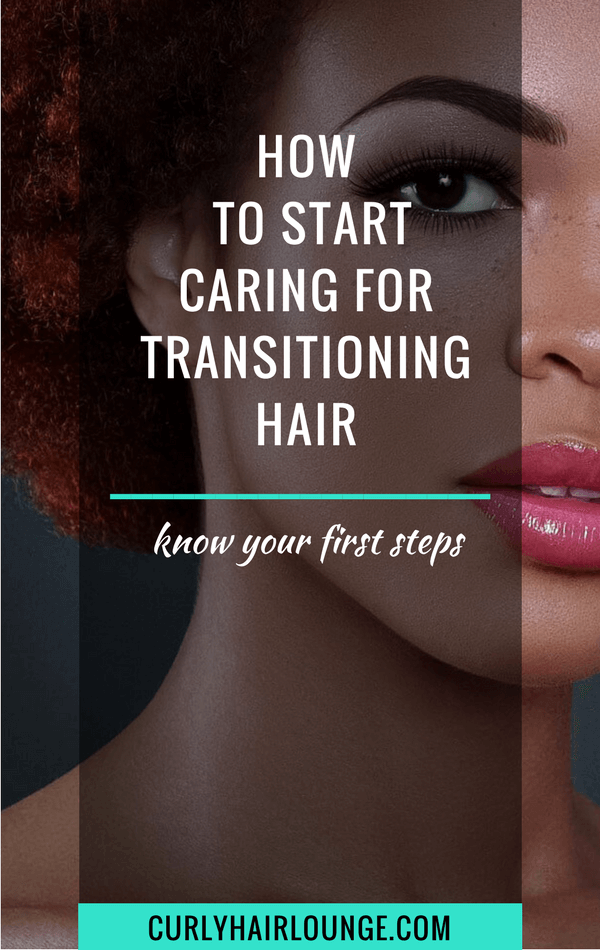
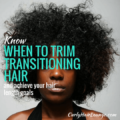
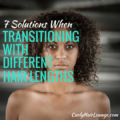

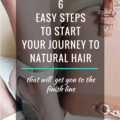

6 thoughts on “How To Start Caring For Transitioning Hair”
Very useful information on your site for people with Curl issues. Great Job!
Thank you Michael!
Great work. This is a fantastic site full of very helpful information. I have a friend who absolutely must see this!
Thank you Keely, the more the merrier!
I don’t have super curly hair, but I do have a subtle wave when it’s wet. I’ve always wanted to know how to keep it wavy without putting terrible gunk in it. I live in an area where it’s so dry that my hair just straitens a bit but then looks kinda ratty, which I don’t like. So I usually just straiten with a tool and the blow dryer. I’m going to try a few of these things though and see if it helps, thanks!
Hi Sarah, if you want to keep you hair hydrated and moisturised, you need to use a leave-in, a good moisturiser and then try to seal it with a light oil such as coconut oil, jojoba oil or grapeseed oil. See how it goes, if it feels too heavy maybe use just the leave-in and the oil. Just try a few different combinations and see how your hair feels.